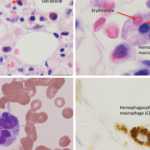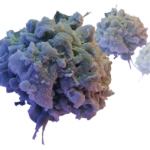Now, HLH is very much in the realm of reality, although just as mysterious as it was before. The COVID-19 pandemic brought HLH out of the shadows and re-presented it as cytokine storm. While immunomodulator use in COVID-19 infection remains controversial, most folks acknowledge that there’s a role that immune dysregulation plays in the severity of infection.
And, as we move further away (we hope) from the height of the pandemic, we’re beginning to realize that viral-induced cytokine storms are commonplace. Well-regulated spikes in cytokines may be really important in clearing germs and restoring function. And when unregulated, cytokine storm can be the first sign of an underlying immune dysfunction.
Even osteoarthritis research is experiencing a resurgence. No longer just a disease of wear and tear, osteoarthritis—the most common form of arthritis—is now recognized as a complex condition mediated by inflammation, ischemia and other forces. It has upended even the most basic conversations between patients and clinicians about what arthritis is.
Among Learners & Teachers
Education is a particularly interesting case in which this adage seems to come to the fore. Education is supposed to impart a sense of wonder and discovery in trainees, but is often riddled with preexisting beliefs. Luckily, intrepid clinician scholar educators are empirically proving or disproving firmaments of faith in education. For example, the old and persistent myth of learning styles has been disproved, time and time again. Previously, we believed that some people are visual learners and others are more auditory. It seemed to make sense and was a pillar of belief among educators at all levels.
And yet, trial after trial and experiment after experiment with learners of all ages showed that this paradigm wasn’t just false but also downright harmful to learners. We discovered that the belief about learning styles placed a lot of burden on teachers to tailor learning plans without much benefit. The myth of learning styles also prevented us from truly individualizing learning plans because we lumped people into categories that seemed to make sense, but didn’t actually exist.1
Discovery in Advocacy
Perhaps the most lovely discoveries are the ones in the hospital, or the clinic. “I didn’t know I could order that!” Or “What an amazing service he provides!” Is something I often exclaim despite being at my current workplace for nine years. When I talk to people from other hospitals, they don’t quite understand the excitement, but it doesn’t detract from my enthusiasm in the least because I imagine they also have their everyday institutional discoveries.


